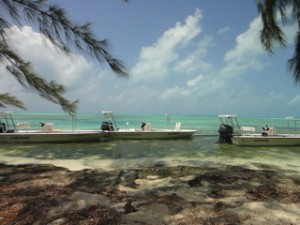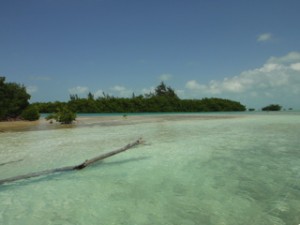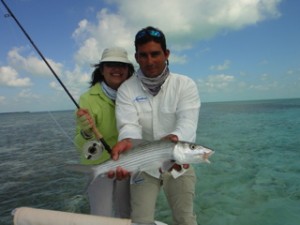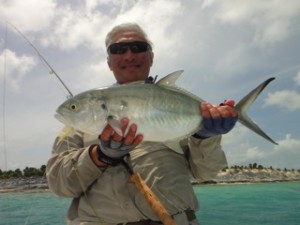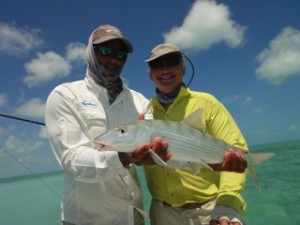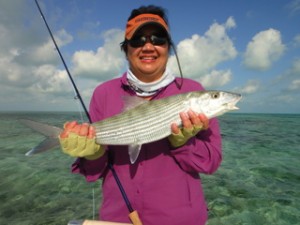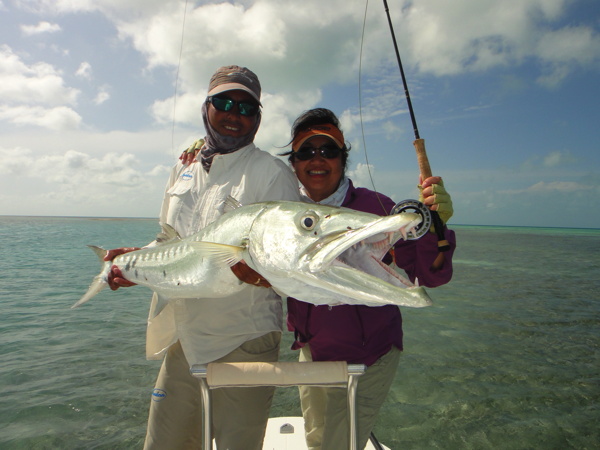A great trip report come through from a recent clients visit to Haukadalsa and Reykjadalsa rivers in Iceland..........
Iceland - The Land of Ice, Fire, and Salmon – 10th to 18th July 2014
Four members of the Wessex Branch Salmon & Trout Association from Dorset had arranged a trip with Mat McHugh of Fly Odyssey who had put together a brilliantly planned trip for salmon, arctic char and wild brown trout. The four in the team were Mike Bilson, Martin Small, David Morton, and Ross Jordan, known during the trip as “The Dorset Boys”.
The flight from Gatwick to Keflavic on Thursday 10th July was a pleasant experience with Icelandair on the Boeing 757, taking two hours fifty minutes landing at 15.15 local time. We were picked up by our private taxi and taken to the Hotel Odinsve, reputed to be one of the best in Reykjavik. The taxi driver recommended the Kaldi Bar in the city centre where they brew their own Kaldi Beer which was pleasant and at UK prices. This was certainly a popular bar with the locals and was full all evening. From there we went for dinner at the Seafood Grill, again in the centre, walking distance from the hotel. This was superb with an extensive menu with dishes such as Minky Whale, Halibut, Cod, Lobster, Shrimps, Scallops, Mussels, and many more. We continued with the local beer, as the imported wine prices were unreasonable. The total bill was around £50 per head but this was a top quality three course meal that you would expect in the best restaurants in London, well worth the money.
The next morning we were picked up by our Guide for the week, Steinar Magnusson, who had good knowledge of all the rivers in Iceland. As well as our fishing Guide he also drove us to all our destinations in his four-by-four. The drive to Haukadalsa River and Lodge was about an hour north located in the west of Iceland flowing into the Hvammsfjorour Bay. The Weather was cloudy and cool at around 14 degrees, with occasional rain, and windy spells. However, when the wind died down and the temperature warmed the midges came out with vengeance and a Midge Net was an essential piece of kit.
The Lodge consisted of eight twin en suite rooms, a communal dining room, and a lounge area overlooking the River Haukadalsa only 20 yards away. The rooms were functional, and the lounge was very comfortable with sofas and easy chairs. The food was magnificent cooked by a Swedish Michelin Star Chef called Robert, who sadly left at the end of our week. He was a great asset and will be hard to replace, not just for his excellent cooking but also friendly personality and detailed fishing knowledge especially on Arctic Char in the estuary.
A typical day started with breakfast at 06:30, leaving for the fishing at 07:00 for the first session until 13:00. The river is about 5 miles long from the estuary to the lake, and has 40 marked salmon pools. The lake acts as a filter when the rain is heavy. The salmon migrate up to the lake in a very short space of time before going on the spawning grounds further up the valley. The water is gin clear and cold. There is no weed or silt in the river, just rocks and boulders of a blue/grey colour. At 13:00 we paused fishing and came back to the Lodge for lunch which consisted of a good hot main course, after which we all tended to go for an hour’s afternoon kip to recharge the batteries before the second session. The second session started at 16:00 going through until 22:00. At the end of the fishing day we came back to the Lodge, showered, and met in the lounge for Gin and Tonics (pre-purchased Duty-Free at the airport) before the excellent three-course meal presented by Robert the Chef. Finally the day ended around 01:00 in the morning when it was still light outside, and we turned in for bed ready to get up again in 5 hours to do it all again. Frequent knaps were needed throughout the day to keep going with good humour!
The fishing at Haukadalsa was split into five rods over the five miles meaning very low fishing pressure. In our party there were four fishermen so we shared a rod between two which was a good arrangement in a twelve hour fishing day! It gave a chance for the partner to rest on the bank. Another tactic was to alternate down a pool with the first guy fishing the pool with a Riffle Hitch of about 1cm long on size 10 treble, then followed by the second fisherman with either a Red Frances size10/12 or a Sunray Shadow. The Riffle Hitch was the most beautiful way of fishing for salmon I have ever known. The technique is to cast square across the river, keeping the rod high, enabling the fly to skate across the pool in a bow quite quickly. The salmon would often follow it first for interest, maybe have a slash at the fly but miss, and then a more positive explosion onto the fly on the third attempt. The test for the angler is to keep your nerve and not strike but wait until you feel the line tightening away from you before lifting into the fish.
We were told that this season had not been good so far. The river was still very high (but clear) from all the heavy rain in previous weeks. This made it hard for the fly to fish well at the right depth and speed. In addition it appears the main grilse runs had not arrived during our stay. The peak season is said to be July 25th until August 10th. So far the Returns Book was recording 40 salmon since the start of the season on 20th June whereas the normal tally for this time of year is around 100. However, the salmon that were in the river were large and fresh.
After twenty minutes of fishing the Home Pool number 35 by the Lodge I managed to land a bright 12lb fresh salmon with full-tailed sea lice indicating it had been in the river for less than 24 hours. It took a Sunray Shadow on floating line with AFTM 8 single handed rod.
The next day Ross had a fresh 9lb sea run salmon again on Sunray Shadow in Pool 3 just a mile up from the estuary. The same day Martin hooked a magnificent salmon in the tail of Pool 7 near the surface again on a Sunray Shadow and after 15 minutes of hard fight it leapt into the air to snap the 12lb leader. David Also hooked a large fish on Sunray Shadow in the Bridge Pool 33 but managed to drop the fish so we never saw it. The following day Ross rose and landed a 6lb bright silver Grilse by skating a size 18 treble Riffle Hitch across Pool 22.
The next day we went fishing for Arctic Char in Pool 1 being the sea pool and Martin landed a fresh 1.5lb Char on a streamer. As we waded out ankle deep into the bay we saw salmon spraying water up as they skittled over the shallow gravel to enter the river. Later that day Ross also caught a 2lb Arctic Char while fishing for salmon with a Sunray Shadow in Pool 3. I also managed to hook and lose a large salmon in Pool 4 about 0.75 mile up from the sea on Sunray Shadow.
After three days salmon fishing we left for our Brown Trout destination which was a four hour drive to the North East of Iceland to fish the River Reykjadalsa. This is a 20 mile long river that joins the Big Laxa salmon river about 10 miles up from the sea flowing into the Skjalfandi Bay. We were staying in a fishing lodge near the village called Lauger. Although a self-catering lodge the food was all included in the price which was taken at a local cafe. This was rather a let-down after the Michelin Star Chef at the previous location, but turned out to be perfectly practical.
The timetable changed to a slightly more relaxed schedule, having breakfast at 07:00, fishing from 08:00 until 13:00, then coming back to the cafe for lunch. We recommenced fishing at around 14:30 until 20:00 after which we returned to the Lodge for a shower and evening meal, with further Gin & Tonic or Whisky.
The Brown Trout fishing turned out to be an amazing experience. In the calm weather the midges came out and rises could be seen all almost anywhere. The best dry fly was a size 20 Black Gnat, and in the calmest conditions it was necessary to go down to 7X tippet although this was a high risk strategy with such large strong fighting fish. A sensible tippet was around 5X. There were times when we could not decide which rising fish to target first. The Browns were heavily spotted all over and of the most supreme fitness, all being totally wild. The weights ranged from 0.75lb up to 3lb with the average around 1.75lb. When the breezes came or the temperature dropped the rises tended to pause in which case a switch to a Gold Head Sedge Pupa size 12, or weighted buzzer pattern did very well. Strike indicators were a popular local method for those who like that sort of fishing. When this method got hard we diverted to streamers such as The Dentist size 8 long shank sometimes with a trailing weighted nymph dropper to add choice and depth. This was a deadly method fished down and across in fast riffly water behind boulders and across deeper pools. In total we landed 126 fine wild Brownies between us and missed or lost as many again.
A real extra treat was the presence of salmon in the river who had made themselves known by cruising around pools or splashing. On the penultimate day I decided to target the salmon firstly with the Riffle Hitch. This produced amazing results with salmon following, slashing and eventually taking the Hitch. The challenge was to wait for the pull rather than strike but having connected solidly with two salmon , one managed to snag itself around a boulder at the bottom of The Pipe Pool and rip the fly clear, while another ran strongly upstream before lacerating the leader on some sharp rock and breaking the line. The same day I lost two other salmon on Sunray Shadow making four dropped in the day.
On the final morning we managed to get four hours fishing in before catching our internal flight from Akureyri airport back to Reykjavik. In that four hours I landed two browns accidentally on the Riffle Hitch before discovering a new Pool 57 in a gorge where the waterfall created a deep narrow pool with white water at the head, fining down to a calmer tail. Thinking that the second half of the pool would be the better chance I casually unclipped the Sunray Shadow off the hook ring and flicked 6 feet of fly line across the head of the pool. I looked behind me to check the vegetation ready for the next cast and on glancing back at the pool I noticed the large brown back of a large salmon rise from the depths. Its massive white mouth opened and engulfed my fly on the first traverse of the head of the pool. Still using my AFTM 5 Helios 2 Trout rod with about 75 yards of backing I quickly realised that I needed to get below the fish to tire it out against the strong current. Keeping my rod high this worked for about 15 minutes after which the salmon decided to try a different tactic and run downstream. There was no obvious barrier to stall its run so I had no options but to get in the river and follow it downstream. This worked for 50 yards until I came across a deep pool, and so with the Battenkill Trout Reel drag now on full power I held the rod in my left hand and scrambled up the rugged and steep bank to follow it another 70 yards downstream. Eventually the river shallowed and the salmon began to tire. At this point I was able to beach the salmon. I carefully measured the fish against the rod at 98cm, estimated at 20lb and spent some considerable time reviving the fish. This turned out to be my last cast of the holiday as I had now run out of time and had to catch the lift to the airport.
We stayed the final night in Alex’s Guesthouse at Keflavic which was a real surprise. It consisted of about 20 twin bed log cabins a short distance from the airport runway with a free shuttle bus, ready for our home flight at 07:45. A superb idea and wholly practical. The final night we managed to find another superb restaurant called the Duus on the harbour front at Keflavic being a 20 minute walk. This was a magnificent fish restaurant and a fitting end to a great holiday, the prices were reasonable at about £50 per head for top quality food.
So the final Catch Return for the week for the four anglers was 11 salmon hooked (4 landed), 3 Arctic Char, and 126 wild Browns up to 3lb. A magnificent result with many great experiences on the way. The special features of Iceland are the purity of the water, lack of pollution, industry, or population, the tightly controlled light fishing pressure, abundance of water, midges, and salmonids. A perfect cocktail for the keen flyfisher who can stand the physical pace.
Michael Bilson
July 2014
FOR MORE INFORMATION ON FLY FISHING IN ICELAND PLEASE CALL US ON +44 (0)1621743711 OR EMAIL US: enquiries@flyodyssey.co.uk WEBSITE: www.flyodyssey.co.uk




























